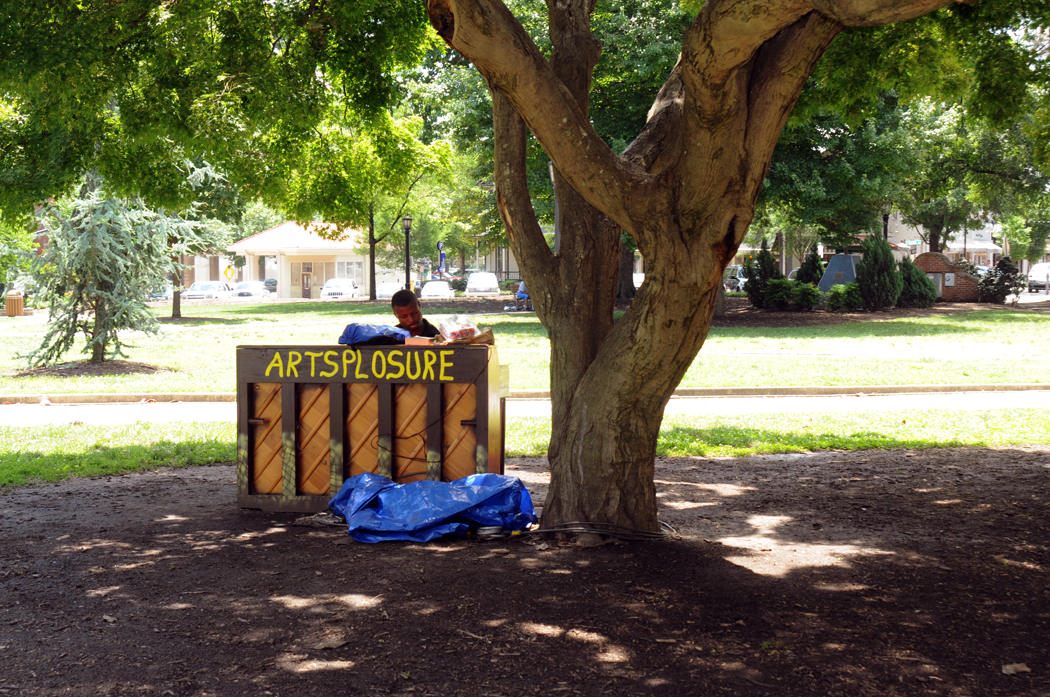Editor’s Note: This is part two of a two-part series looking at Moore Square. The first piece looked at development in and around the square.
The daily bustle at downtown’s Salvation Army building feels different this month as staff busily pack up offices, bunks, classrooms and the cafeteria; places where thousands of poor and homeless men, women and children received warm coats and help with utility bills, learned job skills and ABCs, dined, showered and slept for more than 50 years on Moore Square.
In coming days, the agency will move 2.5 miles north on Capital Boulevard to a state-of-the-art facility with nearly three times the beds for women and children, a much larger cafeteria and more room for the social services residents throughout Wake County desperately need.
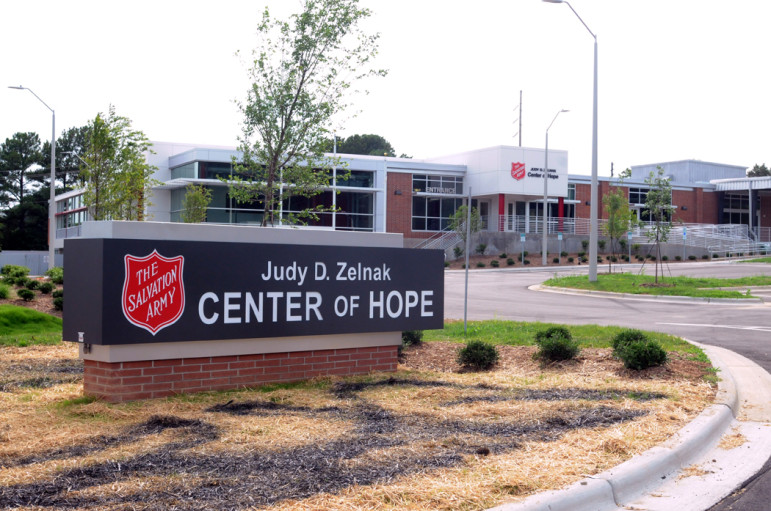
Karen Tam / Raleigh Public Record
The new Salvation Army building on Capital Boulevard.
In many ways, the move offers hope and opportunity for an even larger population of people in need.
But it also symbolizes a changing guard over Moore Square and downtown’s eastern edge, one that’s put fear in the minds of people who’ve spent their days catching up with friends on park benches, lounging in hammocks hung from historic oaks, gathering around a communal piano to sing and dance and waiting in lines for evening meals — sometimes the only sustenance of the day.
As the city and state finalize $14.8 million plans for a revitalized park, developers plan new apartment, retail and office complexes along its bounds, and more agencies mull moves out of downtown, the population of working poor and homeless fear what could transpire in months and years to come.
Can they spare $2 each evening to take the bus to and from the new soup kitchen? Where will weekend meals (previously delivered to the square) come from? What will happen to the property values and tax rates of residents in East and Southeast Raleigh? Will there be affordable or subsidized housing in downtown?
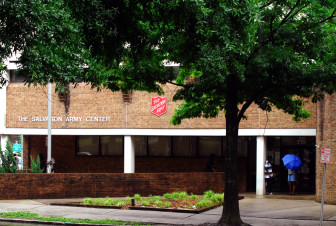
Karen Tam / Raleigh Public Record
The Salvation Army building sits across from Moore Square and is in constant use. The Salvation Army is moving to a new location on Capitol Boulevard.
“I don’t know what the homeless people are supposed to do,” said Joyce Johnson, 70, who spent five recent weeks on and around the square without a home. “It seems like Raleigh wants homeless people to be invisible.”
Members of the homeless and working poor, questioned one recent day on the square, say they’re concerned not just about meals once the Salvation Army goes away, but where they’ll spend time when the park closes for renovations. And, when the square reopens, if they’ll be as free to hang out on its benches and walkways.
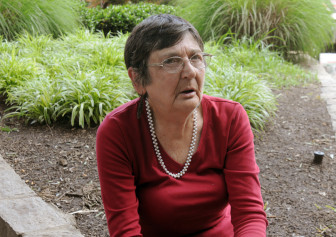
Karen Tam / Raleigh Public Record
Joyce Johnson talks about the problems of the homeless as she sits in Moore Square.
They welcome any upgrades that are inclusive to all (such as public restrooms and a kids play area), but they’ve already felt an increasing police presence near the park. Several people were arrested for panhandling in the days prior to May’s Artsplosure event. Banning smoking from the Moore Square Bus Station also felt like a direct attack on the men and women who spend time on the Square, they said.
“They do a lot of harassing and racial profiling in the [downtown] parks, picking on the homeless,” said Gregory Harsfield of Southeast Raleigh. “We think it’s going to get worse.”
Agency and city leaders insist those fears aren’t falling on deaf ears.
For example, the Salvation Army will ease its transition to a new facility by initially busing people from Moore Square for its weeknight meals. The facility will also begin serving at 4:30 p.m. to give men time to get back to the downtown men’s shelter, which opens at 6 p.m.
Salvation Army staffers hope to hear the concerns from former Moore Square patrons on those bus rides, and to address them during the months to follow.
“We certainly do not want to be an organization that shifts the soup line away with no plan,” said Paige Bagwell, the Salvation Army’s director of operations and communications.
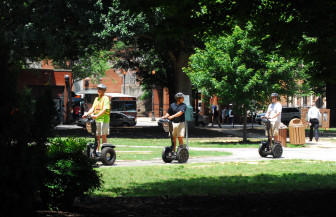
Karen Tam / Raleigh Public Record
A Segway tour cruises through Moore Square.
The Raleigh Rescue Mission, which is also considering a move outside of downtown to make more room for its services, has been busy organizing a new group to coordinate the many churches and volunteer groups that deliver food to Moore Square on weekends.
Called Wake Area Missions Ministries, or WAMM, its role is to coordinate meals and other services in new locations outside of downtown. The hope, says the rescue mission’s Director of Development Bruce Storer, is that meals can be served closer to existing homeless camps and poor communities, and at various times throughout the week and weekend — rather than back to back or overlapping, like they do now.
“The vast majority will be no further walk than what they’re doing already, and in many cases, it’ll be shorter,” Storer said. “And we eliminate chaos on one of the busiest downtown blocks.”
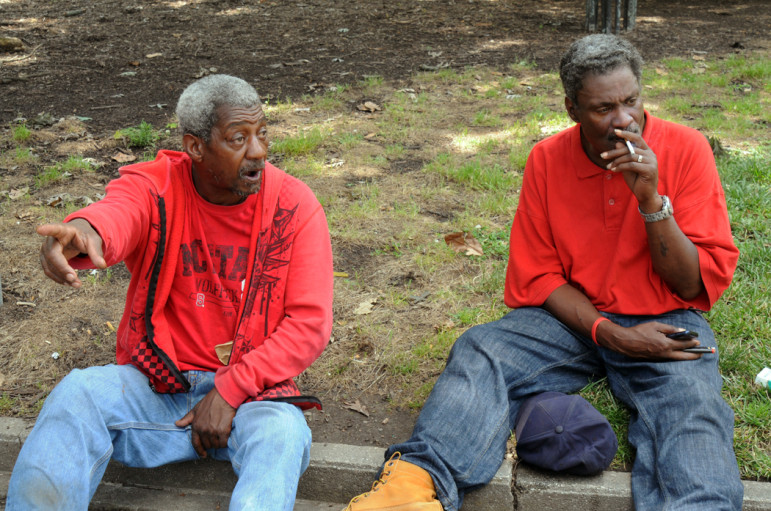
Karen Tam / Raleigh Public Record
Sitting on the grass in Moore Square, Larry Underwood, left, says he sleeps outdoors and Samuel L. Johnson, right, has a place to live on Avent Ferry Road.
The city and Raleigh police have worked closely with the agencies to be sure all of its residents are being served during the transition on downtown’s east edge.
“There is no question that we see this as an area that can serve all residents and all people,” said Mitchell Silver, the city’s planning director. “That was true from the very beginning when we started the Moore Square planning exercise.”
But that doesn’t mean the poorest population of the city will be a target for new residences, restaurants and retail stores. Most of the new development will be market-rate in order for developers to get the returns they need to justify the projects, Silver said.
Higher-end development could mean that property values increase near the square, and tax rates climb. But that’s only if longstanding residents begin to sell their land and homes.
“We’re trying to explain to the public that the biggest threat to gentrification is their neighbor — they have a legal right to sell their property,” Silver said.
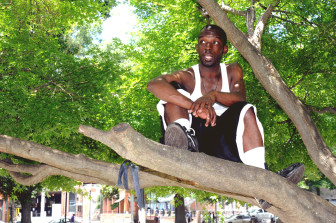
Karen Tam / Raleigh Public Record
Tony Smith from Georgia, stays cool up in a tree in Moore Square.
So far, the speculation that happened in Oakwood and other parts of downtown hasn’t hit East or Southeast Raleigh. Besides the few properties in the two blocks around the Square, values have stayed constant.
“It’s still a neighborhood in transition,” Silver said.
In any case, city and agency leaders are adamant that the plight of the homeless and poor will not be forgotten as downtown Raleigh continues to evolve.
“What we want is what’s best for the city of Raleigh,” Storer said. “But also what’s best for the homeless people and working poor that need assistance. And we’re working toward a collaborative effort to serve both.”
